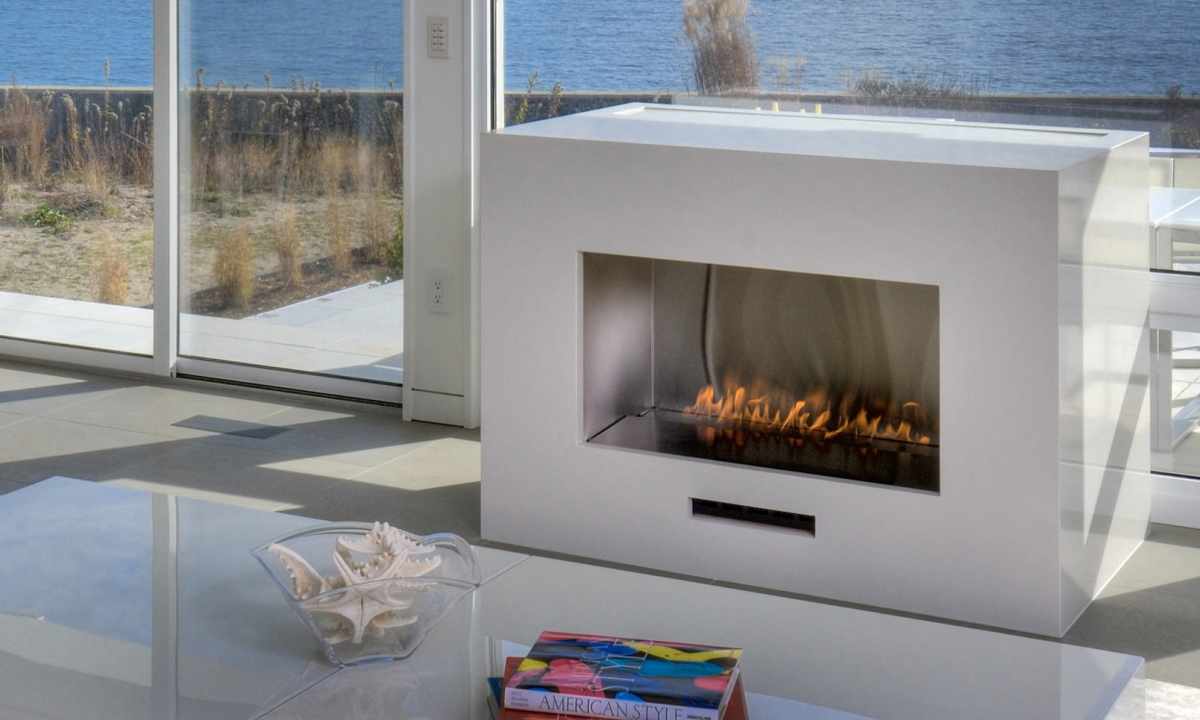The effective heating system will provide also comfortable microclimate indoors, and economy of expenditure of resources. Choosing fireplace as the heating device, it is necessary to take care of fire safety of construction. Thermal insulation will protect the building and decorative finishing of the room from excessive heating and risk of emergence of ignitions.
If in the house you have decided to establish fireplace, it is necessary to know that the portal for the device of construction has to have the special heat resisting contour protecting adjacent materials from damage or ignition. In case the fireplace is solid-fuel or gas, it will be required to carry out flue which also needs additional thermal insulation.
Fireplace device
If not to go into details, then the main components of fireplace it:
- fire chamber;
- tooth;
Fireplaces are separated on the following sign:
- the closed fire chamber;
- open fire chamber.
The first safer and effective. But fireplaces with open type of fire chamber allow to enjoy type of naked flame that attracts users.
Solid propellant fireplaces warm the internal surfaces and products of burning to 500 degrees. At the same time in decorative box of fireplace temperature will be not higher than 100 degrees that is notable below. Anyway, from such temperature there can be ignition if not to equip special heat-insulating barrier.
Overview of types of flues
The hermetic channel located vertically provides draft and sustains combustion in fireplace. This design is also called flue. The effective extract deletes products of burning and provides air supply in fire chamber. The flue takes active part in air exchange of the room.
Requirements to flue:
- resistance to high temperatures;
- inertness to chemicals (burning products) which are formed as a result of burning;
- ability of surface not to detain on itself soot and condensate.
Modern flues make from:
- clay brick;
- glass;
- ceramic;
- steel pipes.
Each of materials has the features and advantages. Brick the most checked and economic, and glass - the most expensive, but the most reliable.
Thermal insulation of fireplace and flue
It is important to distinguish two types of thermal insulation materials:
- for isolation of heat (are applied to work with temperature up to 100 degrees);
- heat resisting for protection against ignition (are necessary at the planned temperature condition from - 180 up to +750 degrees).
!! Heat resisting materials have to have the high density as degree of security of surfaces depends on it.!!
Thermal insulation purposes
- to increase fireplace efficiency (to keep warmly indoors);
- to avoid overheating of the walls adjoining to fireplace and flue;
- to prevent premature cooling of products of burning;
- to protect interior finish of the room Ott of loss of durability and elasticity (some materials when overheating burst or melt);
- to exclude formation of condensate and contamination of flue.
Materials
The most popular materials applied to thermal insulation:
- superizol;
- minerit;
- stone or silicic fibers;
- superforces;
- vermikulitovy and gypsum-fiber sheets and so forth.
For construction of thermal insulation prepare:
- heat-insulating plates (happen to foil and without);
- heat resisting glue (mineral structure on the basis of cement);
- heat-resistant aluminum adhesive tape.
Instruction on fireplace fire chamber thermal insulation
- Calculate quantity of necessary heat-insulating plates (it is necessary to measure fireplace fire chamber perimeter);
- Apply heat resisting glue on plate, turning material not foiled party to wall;
- Fix thermal insulation plates on surface and process joints of plates adhesive tape;
- Record fireplace in the portal;!! Between walls and fire chamber of fireplace there has to be air layer at least in 4 cm!!
- Establish over fireplace (for flue) metal guides vraspor;
- Fix thermal insulation material between guides.
So, the fireplace and the acting part of flue are protected in due form.
Instruction on flue thermal insulation
The main material for thermal insulation and flue, and fireplace is stone cotton wool. Thickness of insulation course is chosen depending on type of flue and fireplace.
Depending on type of materials of flue the heat insulation is chosen. For example:
- For brick flues use stone fiber in rolls or plaster over armsetka;
- For clay and metal pipes of round shape choose the rolled thermal insulation closed in stainless steel;!! Sometimes from metal or ceramics apply to pipes also plastering on grid.
!! In unstable weather conditions the flues warm by means of breeze slabs!!
At the device of fireplace be guided by regulations: Joint venture 7.13130.2013 "Heating, ventilation and conditioning. Fire safety requirements". In this document requirements to flues and heating appliances are accurately described.

